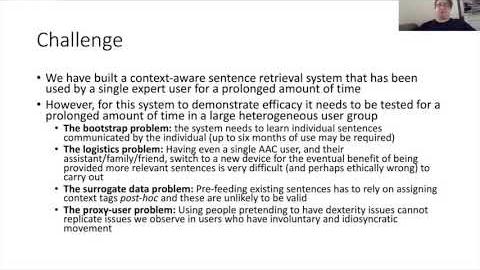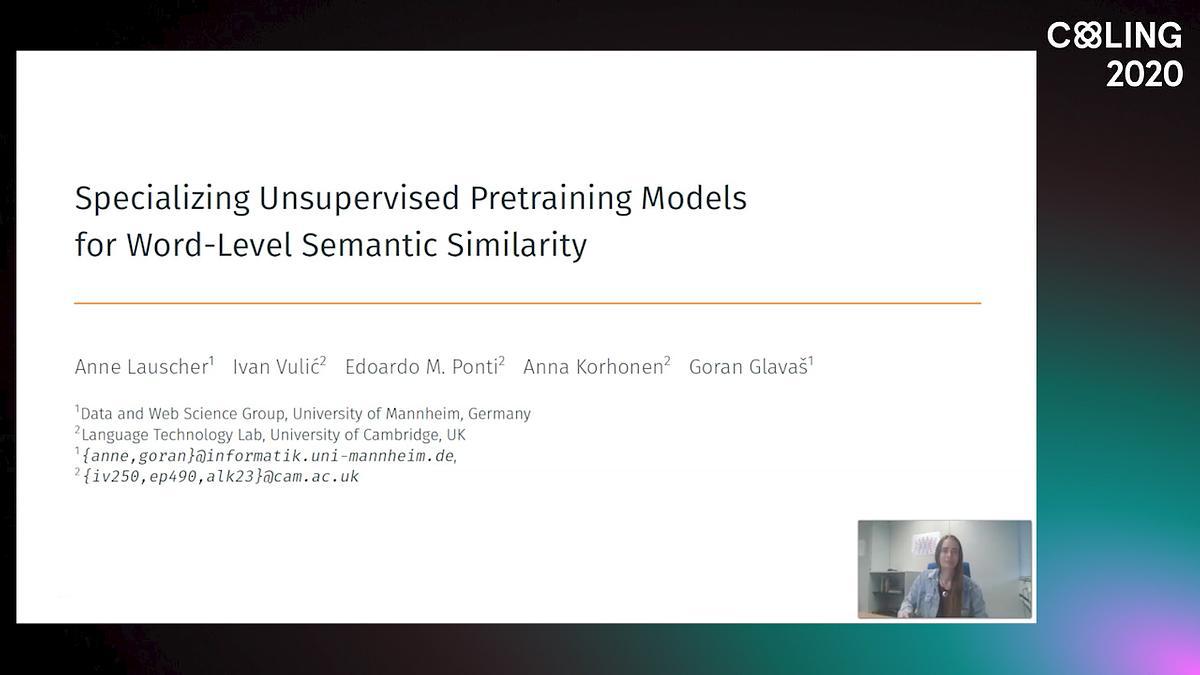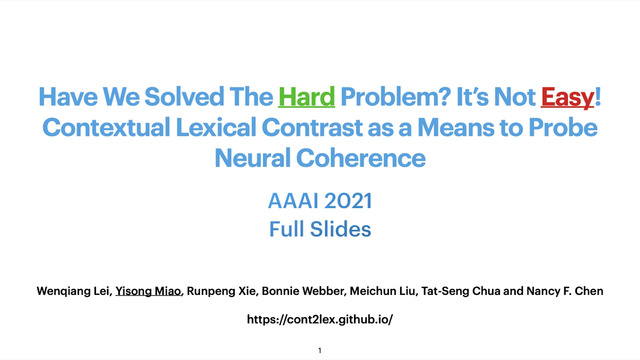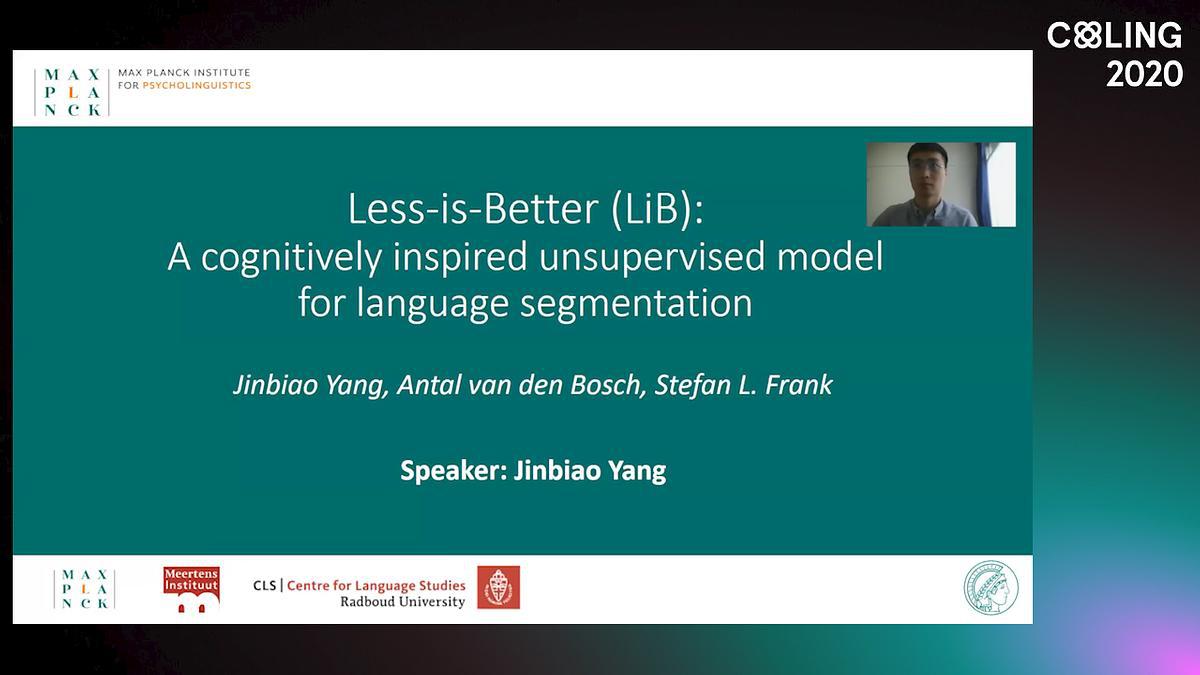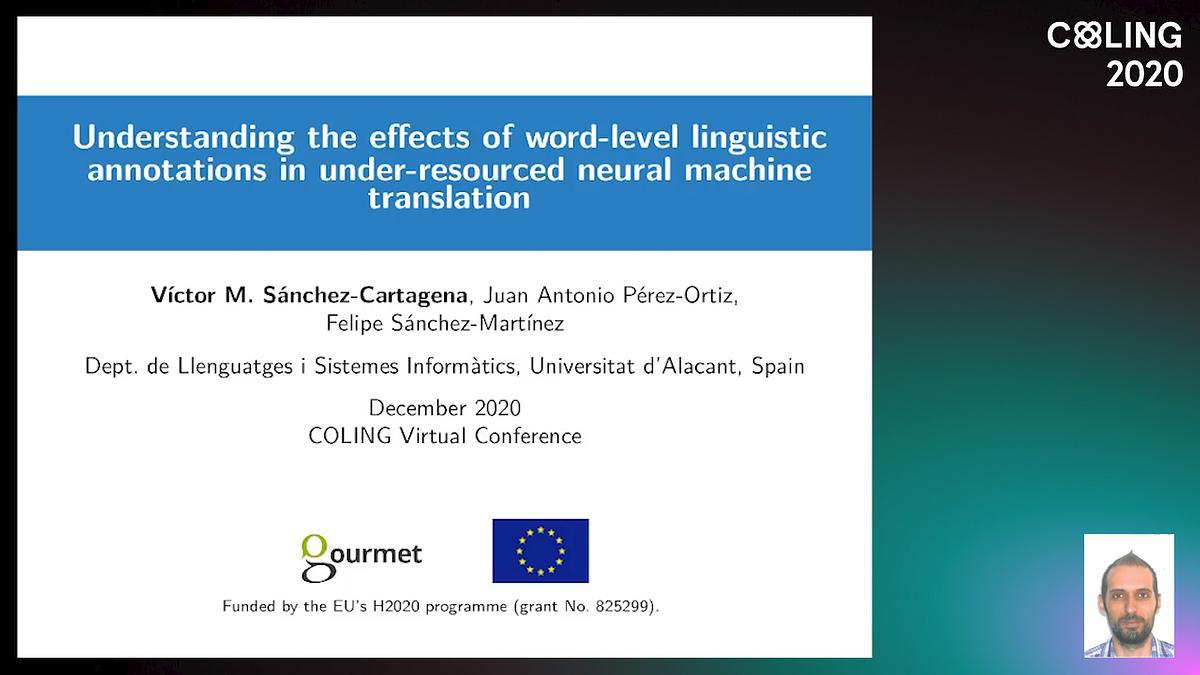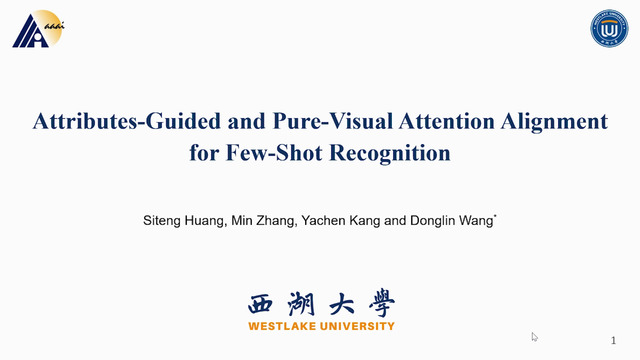Abstract:
Nonspeaking individuals with motor disabilities typically have very low communication rates. This paper proposes a design engineering approach for quantitatively exploring context-aware sentence retrieval as a promising complementary input interface, working in tandem with a word-prediction keyboard. We motivate the need for complementary design engineering methodology in the design of augmentative and alternative communication and explain how such methods can be used to gain additional design insights. We then study the theoretical performance envelopes of a context-aware sentence retrieval system, identifying potential keystroke savings as a function of the parameters of the subsystems, such as the accuracy of the underlying auto-complete word prediction algorithm and the accuracy of sensed context information under varying assumptions. We find that context-aware sentence retrieval has the potential to provide users with considerable improvements in keystroke savings under reasonable parameter assumptions of the underlying subsystems. This highlights how complementary design engineering methods can reveal additional insights into design for augmentative and alternative communication.
